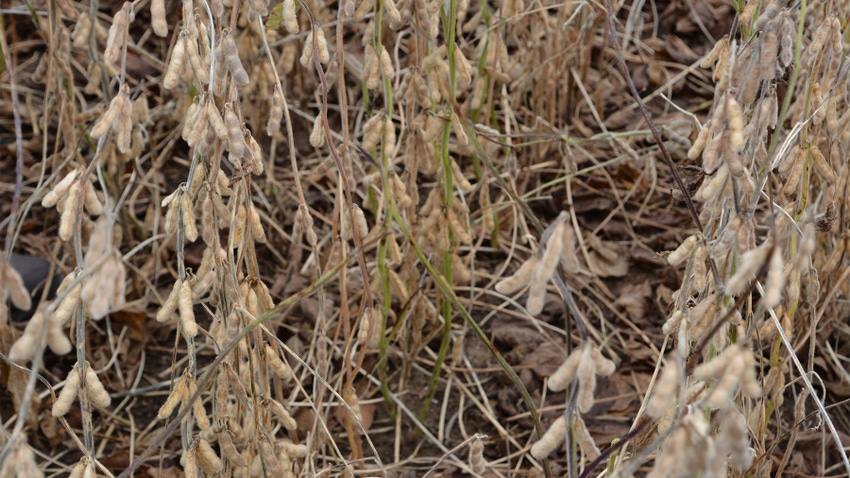
Have you reached 100 bushels per acre in soybeans yet? As a whole-farm average? On a single field? On a single pass? Has your yield monitor displayed 100 bushels per acre on an instant readout? More growers are reporting this kind of success. If you haven’t seen triple digits yet, what is the secret to reaching this milestone?
Shaun Casteel crossed the 100-bushel-per-acre yield plateau for a treatment average in a research trial for the first time in 2023. One treatment in a sulfur trial at Purdue’s Agronomy Center for Research and Education, or ACRE, near West Lafayette, Ind., came in at 101 bushels per acre. Casteel is the Purdue Extension soybean specialist.
“There really is no secret to it,” he says. “Rather, I believe it comes down to doing all the basics correctly, paying attention to detail and getting an assist from Mother Nature in the weather department.”
With drought early and again late, the 2023 season may not seem suited to reaching yields of 100 bushels per acre.
“Timing was favorable in many areas,” Casteel says. “There were times suitable to get the crop planted in the spring, weather was good for emergence, and there was ample moisture during the critical reproduction phase in mid- to late August. Many growers would have welcomed another rain in late August or early September, but soybeans planted early were far along by then.”
Casteel points to the “secret,” which isn’t a secret: “Do the basics and minimize stress on plants as much as possible all season long,” he says. “That should maximize the number of nodes, which means more pods, and helps increase soybean size. Achieving more yield means growing more pods with larger beans inside.”
Key ingredients to soybean yields
According to Casteel, here are the basics for achieving high yields in soybeans:
Plant early. “Be ready to plant in mid-April if soil conditions are right,” he says. “In our sulfur trial, yields for the May planting and yield gains for sulfur were like past years on similar soils. We saw the biggest gains ever and topped 100 bushels per acre when we finally had the opportunity to plant in mid-April.”
Get soil fertility right. Just like corn, soybeans need correct pH ranges and adequate soil fertility levels. “We’re finding more so all the time that for many soils, adding sulfur may be part of that essential soil fertility program,” Casteel says. “Test for sulfur response in your fields. Leave check strips so you can determine if sulfur truly improves yield or not.”
Select good genetics. Doing your homework on soybean varieties is one of those basics many take for granted. Do it, paying special attention to comparisons on disease tolerance and resistance for key soybean diseases in your area, Casteel advises.
Add good treatments. If you’re planting early, seed treatment is highly recommended, Casteel says. “We are most concerned about making sure the seed treatment package includes fungicides for key diseases in your area,” he concludes.
About the Author(s)
You May Also Like




